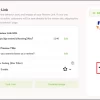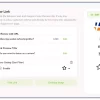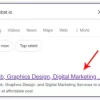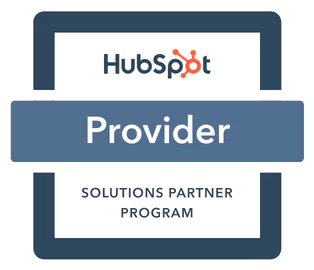
TL;DR
Google Ads vs SEO
- Google Ads is a paid advertising platform offering immediate visibility and precise targeting, with costs per click.
- SEO (Search Engine Optimization) enhances organic search visibility over time, requiring no direct payment for clicks but significant ongoing effort.
- Google Ads provides quick results and is ideal for time-sensitive promotions, while SEO builds lasting organic presence.
- ROI from Google Ads can be immediate but fluctuates with ad spend, whereas SEO offers long-term, sustainable traffic growth.
- Google Ads allows for detailed targeting and budget control; SEO success depends on keyword research, content quality, and site optimization.
- Combining Google Ads with SEO can maximize online visibility and achieve both short-term and long-term marketing goals.
Table of Content
1.Introduction to Digital Marketing Strategies
2.Google Ads: Immediate Impact and Targeted Reach
2.1 How Google Ads Works
2.2 Advantages of Google Ads
2.3 Considerations for Google Ads
3.SEO: Long-Term Growth and Organic Traffic
3.1 The Nature of SEO
3.2 Advantages of SEO
3.3 Considerations for SEO
4.Making the Choice Between Google Ads and SEO
4.1 Balancing Budget and Timing
4.2 Understanding Your Target Audience
4.3 Assessing the Competition
5.Best Practices
6.Conclusion
Google Ads vs SEO
Introduction
Google Ads vs SEO – In the ever-evolving digital marketing arena, businesses face a critical decision in choosing between Google Ads and Search Engine Optimization (SEO) to boost their online presence. Both strategies offer unique benefits and can significantly impact your online visibility, traffic, and ultimately, your bottom line. This article dives into the core differences, advantages, and considerations of Google Ads and SEO, providing insights to help you make an informed decision.
Google Ads: Immediate Impact and Targeted Reach
Google Ads operates on a pay-per-click (PPC) model, where advertisers bid on keywords and pay for each click on their advertisements. This platform is known for delivering immediate results and providing precise targeting options.
Advantages of Google Ads
Immediate Visibility: Google Ads can place your business at the top of search engine results pages (SERPs) almost immediately after campaign launch.
Precise Targeting: Allows for detailed targeting based on demographics, location, interests, and more, ensuring your ads are seen by a highly relevant audience.
Flexible Budgeting: Advertisers can set a maximum budget and only pay when someone clicks on their ad, offering control over advertising spend.
Measurable ROI: With robust tracking and analytics, it’s easy to measure the success of your campaigns and adjust for better performance.
Considerations
Cost: Depending on your industry and competition, the cost-per-click (CPC) can be high, potentially eating into your marketing budget.
Short-term Impact: Once you stop funding your Google Ads campaign, your ads disappear, and the immediate visibility ends.
SEO: Long-Term Growth and Organic Traffic
SEO is the practice of optimizing your website to rank higher in organic search results. It’s a long-term strategy aimed at improving your site’s visibility, relevance, and authority.
Advantages of SEO
Cost-Effectiveness: SEO primarily requires time and effort rather than direct advertising dollars, making it a cost-effective strategy over time.
Sustainable Visibility: High rankings in organic search results offer sustained visibility without the need for ongoing ad spend.
Trust and Credibility: Users tend to trust organic search results more than paid advertisements, potentially leading to higher engagement and conversion rates.
Broad Reach: Effective SEO can attract a wide range of traffic, not limited by specific targeting parameters.
Considerations
Time-Consuming: It can take months or even years to see significant results from SEO efforts.
Constant Maintenance: SEO requires ongoing effort to keep up with algorithm updates and to continue ranking well for your target keywords.
Making the Choice
The decision between Google Ads and SEO doesn’t have to be an either/or situation. Many businesses find that a balanced approach, leveraging both paid and organic strategies, offers the best results. Here’s how to decide what’s right for your business:
Budget and Timing: If you need immediate visibility and have the budget for it, Google Ads might be the way to go. If you’re focused on long-term growth with a limited budget, investing in SEO would be more beneficial.
Target Audience: Consider where your target audience is more likely to engage with your content. For highly specific targeting, Google Ads can be advantageous. For broad reach and building trust, SEO might be more effective.
Competition: In highly competitive industries, the CPC for Google Ads can be prohibitive, making SEO a more viable long-term strategy.
Best Practices
Combining Google Ads and SEO is a strategic approach to maximize online visibility and traffic. Here are streamlined best practices for integrating these two powerful digital marketing tools:
1. Share Keyword Insights
- Use Google Ads keyword performance to inform SEO strategy.
- Conduct keyword gap analysis to optimize both channels.
2. Align Content Strategies
- Ensure consistency between ad copy and SEO content.
- Optimize organic landing pages based on PPC landing page performance.
3. Focus on User Experience
- Prioritize mobile optimization for better performance on both fronts.
- Improve site speed to boost Google Ads quality scores and SEO rankings.
4. Implement Remarketing and Content Synergies
- Use high-performing SEO content for Google Ads remarketing.
- Promote quality content through Google Ads to enhance SEO.
5. Use Data for Continuous Improvement
- Monitor both campaigns with integrated analytics.
- Adjust strategies based on performance data and trends.
6. Leverage Local SEO and Google Ads
- Integrate local keywords in both SEO and Google Ads.
- Utilize Google My Business and location extensions for local visibility.
7. Maintain Brand Consistency
- Ensure a unified brand voice across all digital marketing efforts.
Conclusion: Embracing the Digital Revolution
In conclusion, navigating the digital marketing landscape requires a nuanced understanding of both Google Ads and SEO. Each offers distinct advantages: Google Ads provides immediate visibility and targeted reach, while SEO offers sustainable growth and credibility over time. Rather than choosing one over the other, a balanced, strategic approach that leverages the strengths of both can maximize online visibility, drive traffic, and enhance overall digital marketing effectiveness. By integrating best practices such as sharing keyword insights, aligning content strategies, focusing on user experience, and maintaining brand consistency, businesses can create a cohesive digital marketing strategy. This approach not only capitalizes on the immediate impact of Google Ads but also builds the long-term equity of strong SEO, setting the stage for sustained online success.










